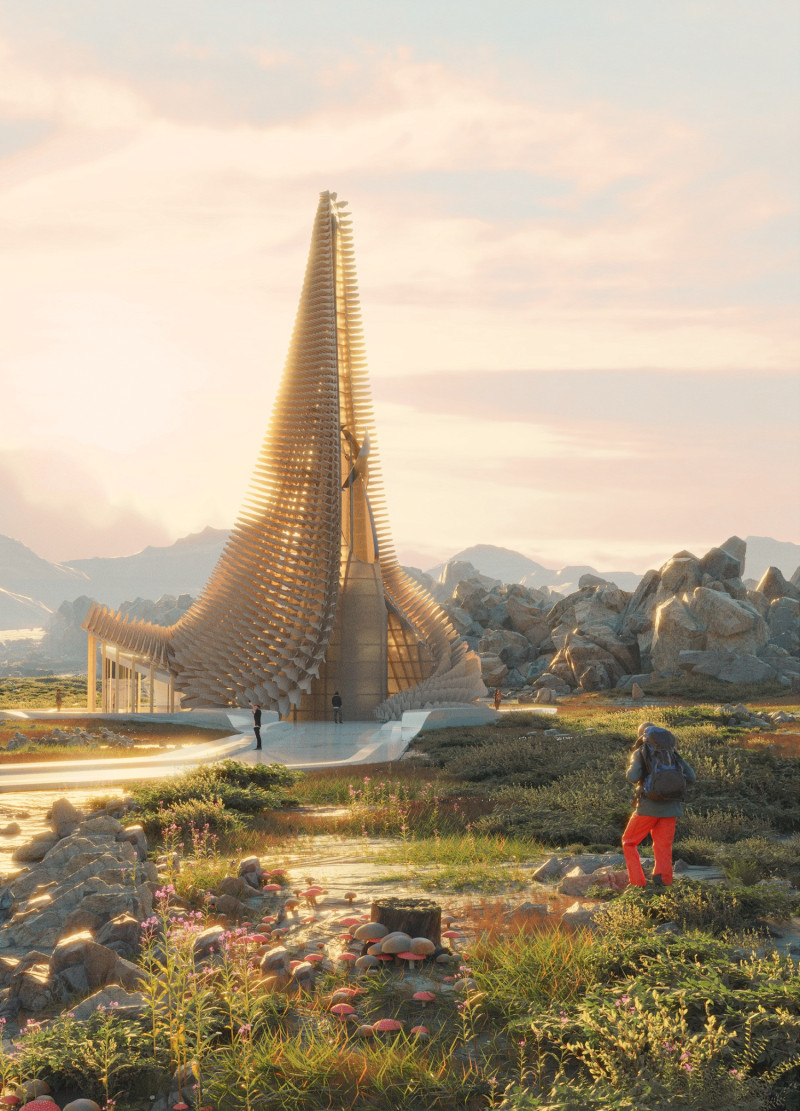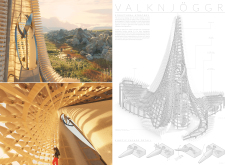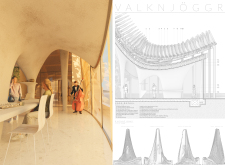5 key facts about this project
As visitors approach the project, they are immediately greeted by the striking interplay of materials that characterize its façade. The use of concrete provides a sense of permanence and durability, while elements of glass invite natural light to stream in, fostering a connection between the interior and the surrounding environment. This thoughtful integration of materials not only enhances the visual appeal of the structure but also supports the overarching theme of sustainability that pervades the design.
The layout of the project has been expertly arranged to promote an intuitive flow between various spaces. Open-plan areas facilitate communal interaction, allowing occupants to engage freely with one another while maintaining privacy where necessary. The design embraces versatility, ensuring that each space can be adapted to meet the evolving needs of its users. This adaptability is a core principle of modern architectural practice, with a focus on creating environments that are responsive to both social and functional demands.
Unique to this project is its approach to landscaping and exterior space. The integration of green areas, whether through the inclusion of gardens, terraces, or living walls, underscores a commitment to creating a harmonious coexistence with nature. These outdoor spaces not only enhance the aesthetic quality of the project but also contribute to the well-being of its occupants by providing areas for relaxation and recreation. The landscaping has been carefully selected to reflect the local flora, further anchoring the project within its geographical context.
Key architectural features, such as [mention any unique architectural elements, such as overhangs, cantilevers, or sustainable technologies like solar panels], mark the design as distinctly contemporary while paying homage to traditional forms. These elements serve multiple functions, including improving energy efficiency and reducing environmental impact. Special attention has been given to the details, from the precision of joinery to innovative systems that manage light and ventilation, ensuring that every aspect of the design contributes to an overall sense of quality and sophistication.
Moreover, the project incorporates community-centered considerations, ensuring that it is not merely a collection of individual spaces but a cohesive environment that promotes interaction and engagement among users. The architectural design reflects local culture and values, inviting dialogue with the existing fabric of the neighborhood. This contextual sensitivity elevates the importance of place within the design, fostering a sense of belonging among its users.
For those interested in a deeper understanding of this architectural design project, a thorough exploration of the architectural plans, sections, and designs will provide invaluable insights into the thought processes underpinning its conception and implementation. An examination of these elements will reveal the intent behind the structural decisions, material choices, and spatial arrangements that collectively articulate the vision of the project. Engaging with these details invites a fuller appreciation of the architectural ideas that have shaped this noteworthy contribution to contemporary built environments.


























